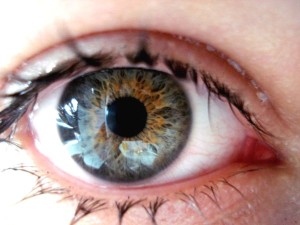 Symptoms of allergies can be almost anything at any given time depending upon the individual. Some individuals are more immune resistant that other individuals are and the medical community and the allergy research to date show very indication as to why. This may sound simple enough, but it really is a complicated situation because of the wide variety of allergens that are constantly all around every individual.
Symptoms of allergies can be almost anything at any given time depending upon the individual. Some individuals are more immune resistant that other individuals are and the medical community and the allergy research to date show very indication as to why. This may sound simple enough, but it really is a complicated situation because of the wide variety of allergens that are constantly all around every individual.
Allergy symptoms unfortunately seem to work off of each other from within the battleground of the lungs. A triggered allergic response will affect the inner lining of the nose and the inner lining of the airways. The various symptoms of asthma occur when the antibodies in the blood are in exposure to the allergy causing congestion, itchy eyes, and the possibility of a skin reaction. This would sure make any happy individual turn miserable real fast. Some of the more common symptoms of food allergies are the following.
- Rashes like redness, swelling, and hives.
- Itching or tingling around the mouth and throat.
- Digestive difficulties such as diarrhea, vomiting, nausea, and cramps.
- Tightening of the chest.
- Shortness of breath and some wheezing.
- Runny nose.
 Individual immune systems produce antibodies when exposure to cats and some dog are within proximity. Some individuals are sick so dramatically they sometimes have to move to a new location out of range of the particular cat or dog. What happens is the antibodies trigger allergic reactions like the nasal congestion and inflammation soon follows. If the individual’s immune system produces allergy antibodies when the individual’s exposure to a specific cat or specific dog then the allergy is in full bloom. The proteins in the cat dander trigger the release of certain chemicals that will cause the inflammation and swelling within the lining of the nose.
Individual immune systems produce antibodies when exposure to cats and some dog are within proximity. Some individuals are sick so dramatically they sometimes have to move to a new location out of range of the particular cat or dog. What happens is the antibodies trigger allergic reactions like the nasal congestion and inflammation soon follows. If the individual’s immune system produces allergy antibodies when the individual’s exposure to a specific cat or specific dog then the allergy is in full bloom. The proteins in the cat dander trigger the release of certain chemicals that will cause the inflammation and swelling within the lining of the nose.
Individuals having difficulty breathing will reach out for many remedies to try to cause the bronchial tubes to subside from the swelling. This is a focus of attention in a number of ways, some of which is through a change in diet for those individuals who experience an asthma episode through an allergic reaction. There are a few inhalers that children and adults can use in an emergency, but the best possible source is to make an appointment with the family medical physician for a proper diagnosis. A few of the symptoms that remain fairly standard are:
- Persistent sneezing and itchy nose.
- Itchy and watery eyes.
- Clogged ears or a persistent ringing in the ears.
- Irritated or sore throat, clear runny nasal discharge.
- Stuffed-up nose, and red, watery eyes.
 Sensitivities to chemicals in the environment and certain foods will trigger the same reaction so this is difficult to pinpoint if it is a reaction to actual lung function from asthma or if it is sensitivity to the environment or a particular food. Foods today, such as the fast foods are not as wholesome as many may think and that it could be from a chemical reaction caused through the processing of the food. Processed food items found in the grocery store may also cause a reaction such as gagging, choking, wheezing and an overall reaction causing the bronchi within the lungs to swell and choke off the channels for air flow.
Sensitivities to chemicals in the environment and certain foods will trigger the same reaction so this is difficult to pinpoint if it is a reaction to actual lung function from asthma or if it is sensitivity to the environment or a particular food. Foods today, such as the fast foods are not as wholesome as many may think and that it could be from a chemical reaction caused through the processing of the food. Processed food items found in the grocery store may also cause a reaction such as gagging, choking, wheezing and an overall reaction causing the bronchi within the lungs to swell and choke off the channels for air flow.
Diagnostic testing is the only way the medical physician can pinpoint the identifying cause and the individual must try to remain patient because this will take time to diagnosis. There are a variety of patch tests the medical physician will conduct, but with each patch test there is a time delay of anywhere from a few days to a week. Similar to the tuberculosis testing that is in many states through a patch test.
Related Articles
